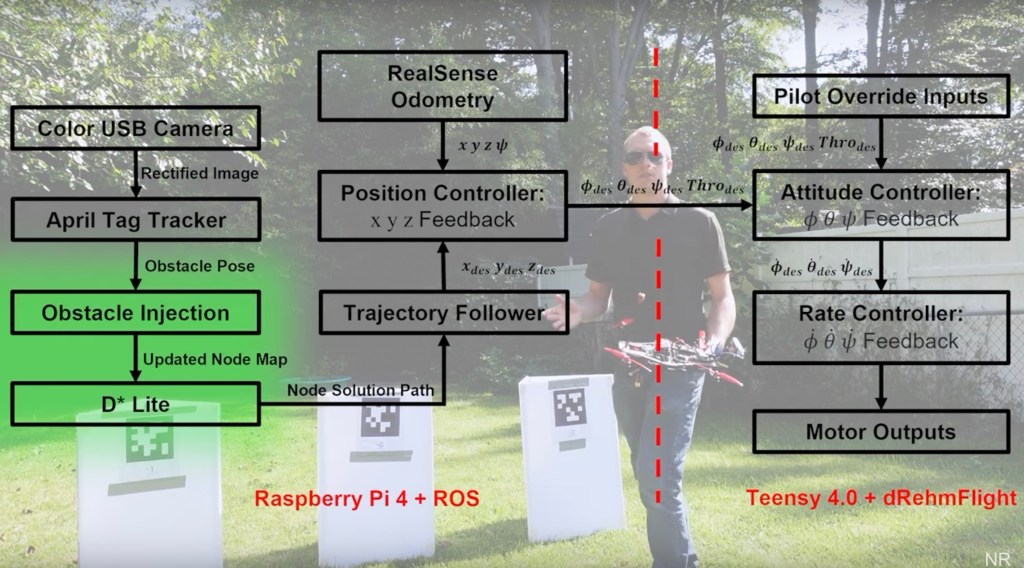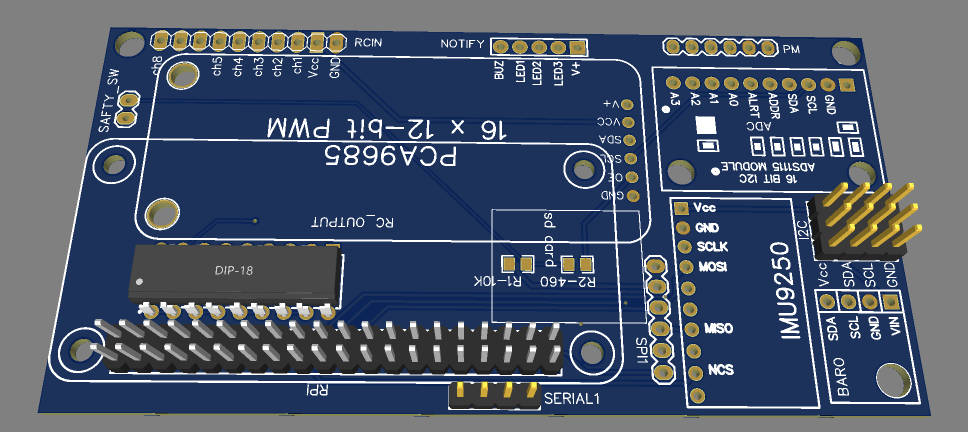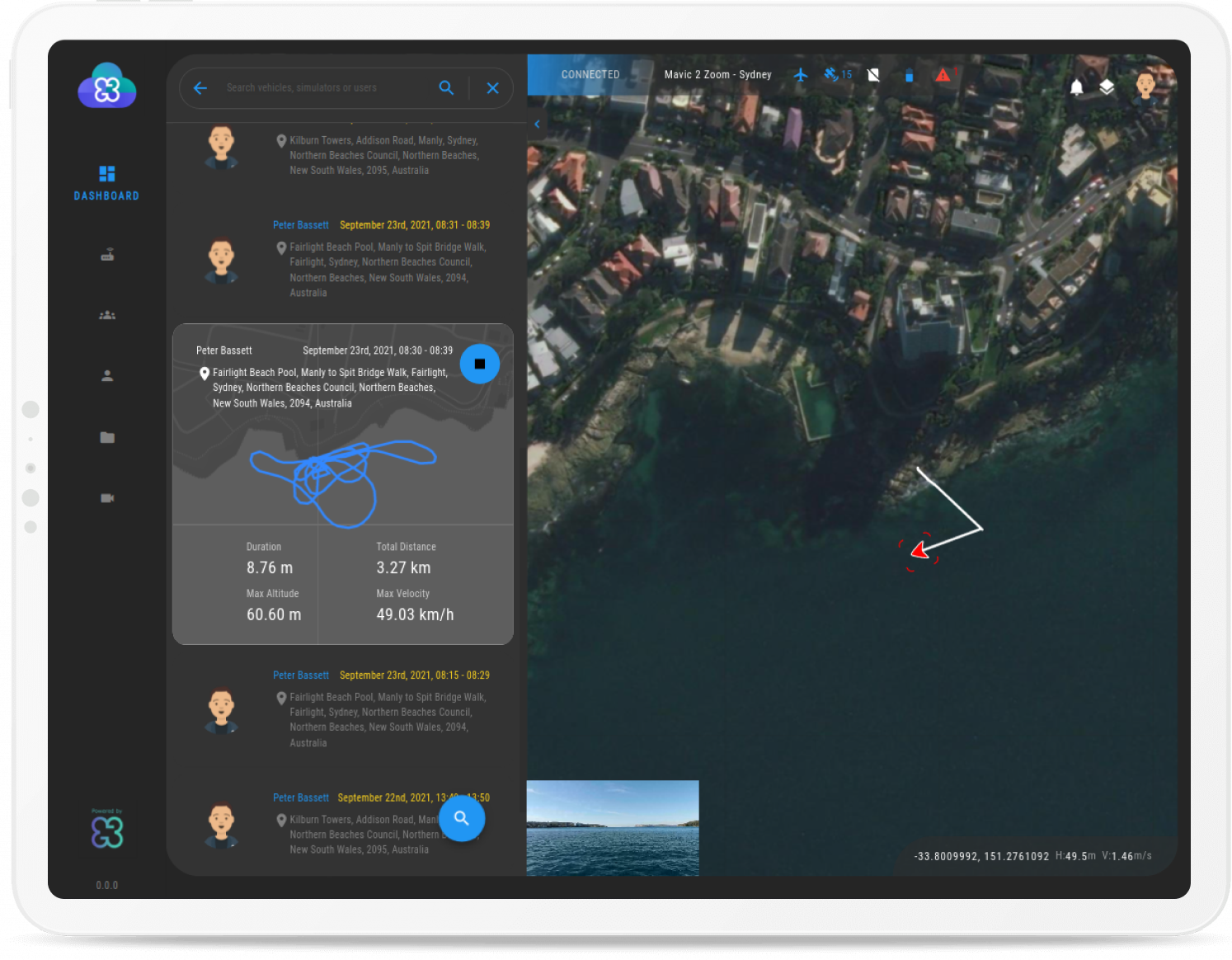The COVID-19 pandemic revealed several operational challenges in performing manual drone flights for numerous use cases such as inspections and progress monitoring. Consequently, employing automation technology has become more of a necessity than a nice-to-have. However, the monolithic nature and prohibitive cost of incumbent drone-in-a-box (DiaB) systems for autonomous UAV operations have lowered the adoption of such solutions. Hence, several companies are working towards modularizing the DiaB stack to reduce cost and increase adoption.

These companies are building automated docking stations that support charging, cooling, and landing for popular, off-the-shelf drones such as the DJI Mavic, Matrice, and Phantom series.
Such systems can enable users to easily deploy fully automated drones (of their choice) for a wide range of applications, such as automated aerial security, asset monitoring, and public safety, at a fraction of the cost of current DiaB systems.
In this article, we highlight the salient features of some of the best turnkey DJI-compatible docking stations in the market that you can leverage based on your geography, business model, and use case. Apart from common features such as cloud connectivity, remote control & telemetry, auto-charging, and interactive GUI, each dock brings a unique set of capabilities to the market, which we have attempted to highlight. It is worth noting that most of these drone nests can be further customized on request or by installing addons.
Hextronics Global Advanced (USA)

The Hextronics Global Advanced supports a rugged, waterproof design that is ideal for a wide range of indoor/outdoor environments and can operate in a temperature range of -20 to +50 °C (-4 to +122 °F). Although the most recent model weighs up to 45 kg (~100 lbs), a clear differentiator of this docking station is its IP66-level enclosure and highly efficient in-house charging feature, where a robotic gantry autonomous performs battery swapping for the drone. Further, the base unit can hold up to 6 additional batteries and keeps them fully charged while the drone is away on routine missions. And despite its small and lightweight design, The Global Advanced does not compromise on any key feature, offering a groundbreaking downtime of just 1.5 min. It is compatible with the DJI Mavic 2 series of drones and its landing pad is installed with LED lights to enable night landing.
IDIPLOYER MP2.1 (UK)

Coming in at only ~30 kg (~66 lbs), the super-light IDIPLOYER MP2.1 is built with a rigid aluminium frame and contains no moving parts such as centering bars or robotic arms for landing or charging the drone. Engineered with insulations that conform to IP65 standards, the station is installed with thermostatic heating and peltic cooling systems for extreme temperature regulation. A contact-charging-based docking station centered around a simple and durable design, the MP2.1 is the ideal choice for large-scale deployments of DJI Mavic 2 fleets. The chassis is fitted with long-range antennas and LED lights for better connectivity and real-time visual alerts, respectively. The station can be secured to any surface such as rooftops or vehicles and contains electromagnetic locks to prevent theft. Furthermore, the rear access panel comes with cam locks, although users have the freedom to add security/locking systems of their choice, including a custom installation of external CCTV cameras.
Heisha D80 (PRoC)

Heisha Tech offers enhanced security and durability with its sturdy designs. Their models are heat-resistant, corrosion-proof, and rainproof monsters with an International Protection (IP) rating greater than 54. Owing to its high reliability and cost-efficiency, Heisha’s docks feature a contact-based charging system; other useful add-ons such as solar panels, weather stations with digital sensors, surveillance cameras, extended range antennas, and loudspeakers are also provided with the dock bundle.
The D80 Drone Dock is highly customizable owing to its modular design: the unit consists of 3 main modules, viz. control, charging, and cooling, and an all-aluminum alloy canopy that has been tested for rigidity. So if you’re a custom drone developer and your hangars have docking and battery-swapping capabilities, you only need a control unit, which is a component that Heisha provides separately. What’s more: the D80 redefines drone agnosticism in the DiaB space, as it is compatible with almost every commercial drone available today, including the DJI Mavic 2 and Mavic Mini series, Phantom 4 RTK, Autel EVO II, Yuneec Typhoon, and Parrot ANAFI. It weighs a decent 45 kg and can withstand temperatures between -20 and +50 °C (-4 and +122 °F). To learn more about the D80 and other drone charging pads designed by Heisha, visit https://www.heishatech.com/d80-drone-charging-dock/
Skycharge Skyport DP5 (Germany)

The Skyport drone hangar is built exclusively for the outdoors, featuring a solid stainless-steel body and anti-crushing design to tolerate physical extremities. It is a heavy-duty dock that primarily supports the DJI Mavic 2 series and Parrot ANAFI drones but can charge any commercial drone with an 11-50V battery using its proprietary conductive-charging pad, the Bolognini S1. The Bolognini S1 is a fast and lossless contact-charging platform that does not require major drone modifications. With an IP65 and CE-certified system, the Skyport DP5 is a reliable and heavy-duty docking station. It offers a 500W zero-loss contact-charging platform with no mechanical moving parts - reducing the required frequency of maintenance and servicing. It also houses an HVAC system to regulate internal temperatures and an electromechanical anti-theft system. To learn more about Skycharge Skyport DP5, visit https://skycharge.de/skyport-drone-hangar
FoxIT Response (South Africa)

The FoxIT Response is a hefty, weatherproof docking station engineered for harsh climates. With its heating, ventilation, and conditioning (HVAC) unit and anti-theft system, it proves to be one of the most environmentally versatile DiaB solutions. It supports the DJI Mavic series and can house any custom drone with similar dimensions. To support a variety of drone models, it offers a retrofit conductive-charging system with a water-resistant pogo pad and bars for drone centering. This charging technology does not necessitate complex drone modifications; a typical charge cycle lasts for about 45 minutes. The Response allows for advanced security with encryption and Airband radio connectivity for remote locations. Opting for additional security enhancements can better its object-detection capabilities to prevent loss and theft. To learn more about Foxit Drone in a Box system, visit https://foxit.co.za/
HIVE Droneport (Russia)

Partners with Volatus Aerospace and Airscope, Droneport LLC is one of the only companies that offers a DJI M300-compatible drone dock with a battery-swapping feature. With a low downtime of just 3 min and a transmission range of over 100 km², the HIVE is a highly robust and reliable docking station suitable for a wide variety of round-the-clock applications. Its battery-swapping module features DJI’s original charging station and can hold 6 and charge 2 batteries simultaneously. This tried and tested hangar houses dedicated security and climate control modules and is certified for distribution in North America. It offers high interoperability with a variety of payloads, add-ons, and software (for image-processing, AI-based analytics, etc.). Visit https://hive.aero/en to learn more.
Airscort ST-1200 (Israel)

This customizable and cost-effective drone docking solution is compatible with the DJI Mavic 2 series. Additionally, it can house custom drones based on the Pixhawk build. The base unit weighs 40 kg and can provide both contact-charging and battery-swapping technologies (based on user requirement), with the latter boasting a downtime of under 4 min. An optional installation of StoreDot batteries is also provided with the kit. The ST-1200 is able to regulate internal temperatures through its insulations and wide array of sensors that can trigger a cooling/heating action based on ambient weather conditions. It also comes with elevated capabilities (optional) for larger, military-grade drones. To learn more about Airscrot drone docking station, visit https://www.airscort.me/
Aerobox (Israel)

The Aerobox drone dock is most suitable for small and lightweight drones and can be used for several security and inspection applications. With an inbuilt smart power generator, the Aerobox is highly energy-efficient and easy to set up. It is also resistant to dust, light, and rain; as a result, it can function in numerous environments, within a temperature range of -25 to +60 °C (-13 to +140 °F). Compatible with DJI Phantom, Mavic 2, Mavic Mini, and Mavic Air drones, this rugged docking station supports a contact-charging platform and smart air-cooling system for increased temperature control. It also contains a wide variety of sensors to relay critical information to the user. Further, several other communication options apart from 4G/5G are available as add-ons.
Software Integration for Drone Charging Stations
Docking stations with self-charging and internal climate-control systems help drone service providers with efficient fleet management and increased accessibility in a wide variety of environments. These state-of-the-art machines form the strong foundation for complete drone automation. Following are a few key features of the dock-integration software offered by the FlytBase team for a fully automated workflow between each of the docking stations featured above and the drone.
Cloud Connectivity
With autonomous docking stations connected to the cloud over 4G/5G/LTE networks using the FlytNow Edge kit, users can rest assured that sending and receiving data would be seamless across the globe. This implies that both the users and the stations are constantly “in the know” of your drones’ flights and landings, and can keep track of their missions, telemetry data, and battery levels at all times. They will also be able to pre-plan failsafe actions that are automatically triggered during emergencies or incidents.
Precision Landing
Almost no modern software solution today is complete without leveraging the advanced computer vision and AI modules. FlytNow leverages this powerful technology to land drones onto a docking station with centimetre-level accuracy. The module can be trained to land on both moving and stationary surfaces as it is built with highly accurate algorithms.
Mission Planner & Scheduler
With this feature, you’ll be able to plan and schedule complex repeatable missions for your drones with a few clicks. These waypoint-based missions execute automatically at the set date and time after sending toaster messages a few minutes before take-off.
Payload & Third-Party Software Integration
For payloads such as loudspeakers, thermal cameras, or spotlights, FlytNow offers a plethora of remote on-screen controls and visualization tools. Upon request, users can also integrate their own custom payloads with the software. Additionally, you can also connect various third-party software such as VMS, UTM, and ERP applications as per your requirements.
To learn more about how FlytNow can help you automate your drone operations or how you can get started with any of the above docking stations, contact us.
 https://dronedj.com/wp-content/uploads/sites/2/2021/11/Rehm.jpg?resize=155,86 155w,
https://dronedj.com/wp-content/uploads/sites/2/2021/11/Rehm.jpg?resize=155,86 155w, 
















